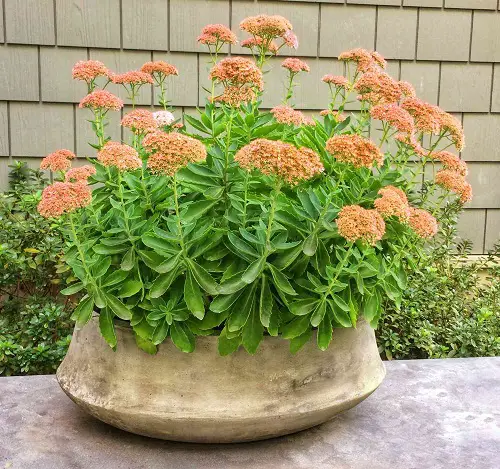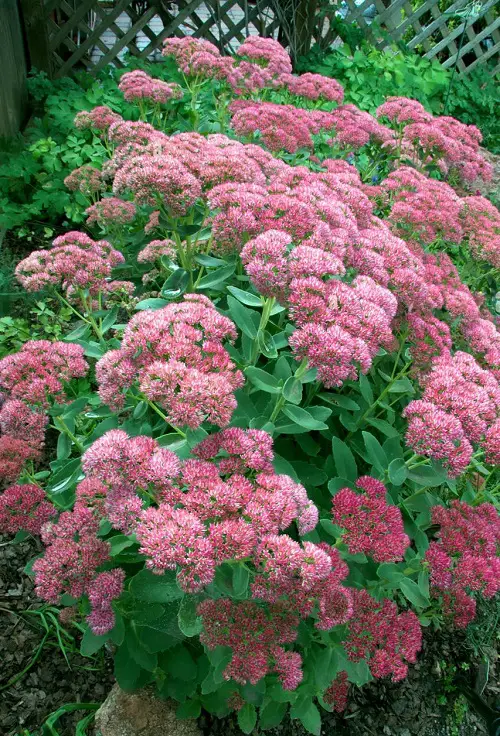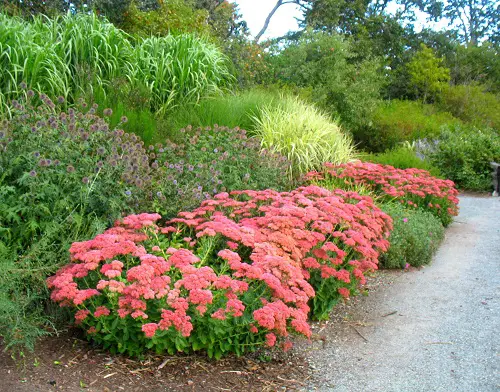Discover the secrets of maintaining a stunning Autumn Joy Sedum plant all season long with this exclusive guide!
This hardy perennial is a favorite among gardeners for its stunning display of pink flowers that bloom late into the fall season. If you want to grow this succulent, read the Autumn Joy Sedum Care guide and find all the answers to questions in your mind.
Read about Sedum Nussbaumerianum Care
Autumn Joy Sedum Plant Information
Autumn Joy Sedum is a hardy perennial in the Stonecrop family. This popular plant is native to Europe and Asia but has been widely grown in North America for decades.
This plant showcases fleshy, succulent leaves that change from green to gray-green as they mature. It forms a clump that grows up to 2 feet tall and 1.5 feet wide.
In late summer and fall, the plant produces large, flat clusters of tiny pink flowers that gradually turn a rusty red.
This plant tolerates a wide range of growing conditions and can thrive in most soil types.
Botanical Name: Hylotelephium telephium (Formerly Sedum telephium)
USDA Zone: 4-11
Common Names: Stonecrop, Showy Stonecrop, and Live-Forever
Growing Autumn Joy Sedum in Pots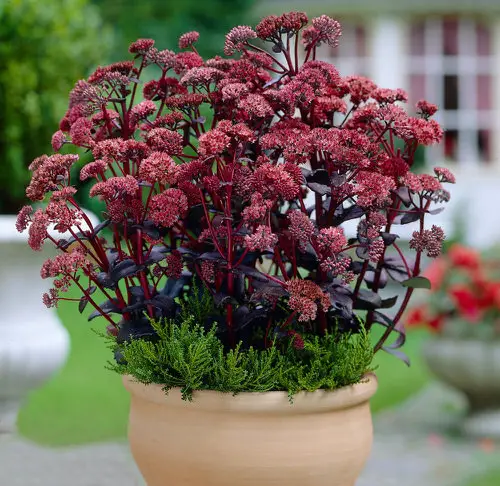
Growing Autumn Joy Sedum in pots is a great way to keep it in small spaces like a patio or balcony. You can start the plant in an 8 inches container, which can be good for 1-2 years.
After that, you can re-pot the plant into one size bigger container than the old one.
Requirements for Growing Autumn Joy Sedum
Location
The Autumn Joy Sedum favors full sun, so make sure to plant it in a spot that gets at least six hours of direct sunlight each day. If you live in an area with intense heat, a spot that gets partial shade in the afternoon can help protect the plant from sun scorch.
Soil
You can grow it in a wide range of soil types, including both clay and sandy soils, but prefers well-draining, slightly alkaline soil.
If planting in clay soil, it is important to incorporate organic matter such as compost or peat moss to help improve drainage and aeration.
Watering
While the Autumn Joy Sedum is drought-tolerant, it still needs regular watering to grow well. Water deeply once a week, and let the soil dry out between watering sessions.
Overwatering can lead to root rot, so you should keep an eye on the plant and make sure not to water it too frequently.
Temperature and Humidity
This hardy plant can tolerate a wide range of temperatures, from hot and dry to cold and wet. It can survive in temperatures as low as -30°F.
On the other hand, humidity isn’t a big concern for this plant, as it can thrive in both dry and humid conditions.
Check out Most Popular Sedums You Can Grow as Houseplants
Autumn Joy Sedum Care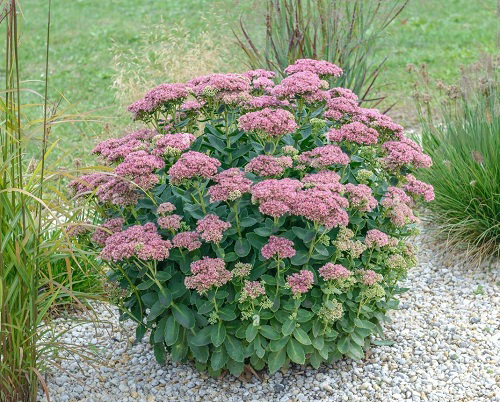
Fertilizer
The Autumn Joy Sedum doesn’t require much fertilizer, as it can thrive in nutrient-poor soil. However, if you want to give your plant a boost, you can apply a slow-release fertilizer in the spring.
Be sure not to over-fertilize, though, as this can cause the plant to grow too tall and flop over.
Pruning
Pruning is not necessary for the Autumn Joy Sedum, but it can help promote bushier growth and prevent the plant from becoming too leggy.
Cut back any dead or damaged stems in the spring, and pinch back the tips of the plant in early summer to encourage branching.
Pests and Diseases
The Autumn Joy Sedum is relatively pest and disease-resistant, but there are a few issues to watch out for. Mealybugs and aphids can occasionally infest the plant but can be controlled with insecticidal soap.
Root rot can also be a problem in poorly draining soil, so be sure to plant your Sedum in soil that drains well.
Powdery mildew can occasionally appear but can be easily prevented by watering at the base of the plant and not overhead.


